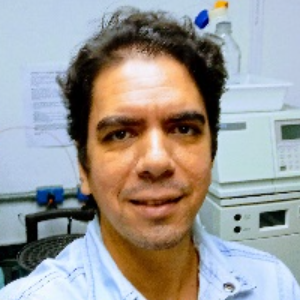Title : CrataBL, unraveling glycosaminoglycan-mediated pathophysiological processes in disease progression and facilitating drug discovery for sulfotransferases
Abstract:
Tumour angiogenesis is a crucial process for the growth of cancerous cells, involving the formation of new blood vessels and being heavily influenced by sulfotransferase enzymes (1). These enzymes play a central role in modifying glycosaminoglycans in the extracellular matrix and cell membrane, affecting the signalling of Vascular Endothelial Growth Factor (VEGF) and thereby promoting angiogenesis (2). CrataBL, a protein isolated from the bark of Crataeva tapia, has shown therapeutic potential when examined in co-cultures of glioblastoma cells and mesenchymal stem cells, disrupting critical processes in tumour progression (3). Moreover, CrataBL has demonstrated to be a pro-angiogenic agent when assessed with HUVEC, stimulating cell migration and activating angiogenic pathways (4). In a more specific context, our work delved into the interaction of the CrataBL protein with glycosaminoglycans. We investigated structural details of these interactions, highlighting crucial aspects of the protein's conformation and its binding affinity with glycosaminoglycans (5). These findings not only enrich our understanding of CrataBL's biological function, which acts as an antagonist in glioblastoma cells and as an agonist in HUVEC cells, but also indicate its potential use in biotechnological applications in neurological pathologies. Given the promising results, we focused our efforts on the structural characterisation of the CrataBL protein. This investigation provided a detailed analysis of CrataBL's structural characteristics, offering essential insights into its mechanism of action and potential biotechnological applications (6–9). Additionally, we explored the binding kinetics between CrataBL and ultra-small 3 nm gold nanoparticles (10). These nanoparticles are widely used in various biotechnological applications, including drug delivery and biomarker detection. Understanding the kinetics of these interactions is of utmost importance to optimise these applications. The results obtained provide valuable information about the speed and affinity of these interactions, strengthening the use of CrataBL in conjunction with gold nanoparticles as contrast agents in techniques such as Transmission Electron Microscopy (TEM) and Scanning Electron Microscopy (SEM). Based on our research and scientific literature, the results emphasise the urgency of investigations into specific sulfotransferase inhibitors, such as Heparan Sulfate 2-O Sulfotransferase (HS2ST). This strategy demands a detailed exploration of the structure and function of HS2ST, aiming to identify potential allosteric sites and comprehend the underlying molecular interactions. The implementation of these allosteric inhibitors, following a thorough evaluation of their effectiveness and selectivity, could represent a significant advancement in regulating the sulfation of glycosaminoglycans like Heparan Sulfate, with direct implications for modulating relevant biological processes (11), especially in pathophysiological contexts like glioblastoma and other neurological diseases. In this context, it is crucial to highlight that the researcher is dedicating significant efforts to obtain recombinant Heparan Sulfate 2-O Sulfotransferase (HS2ST) with the specific aim of utilising it as a primary target in the Drug Discovery process, aiming to identify potentially therapeutic compounds that can modulate HS2ST activity.
Audience Take Away Notes:
- The audience will gain valuable insights into the role of sulfotransferase enzymes in tumor angiogenesis and the potential therapeutic applications of CrataBL in neurological pathologies. This knowledge can inform their research and potentially lead to the development of sulfotransferase inhibitors or the utilization of CrataBL in biotechnological contexts.
- This information can benefit researchers, clinicians, and biotechnologists by enhancing their understanding of tumor angiogenesis and the molecular interactions involved. It may inspire new avenues of research, contribute to the development of therapeutic interventions, and improve the treatment of neurological diseases.
- This research may improve the accuracy of drug design by identifying potential targets, such as sulfotransferase enzymes, and understanding their interactions. It also provides new information about the structure and function of CrataBL, which could assist in designing innovative therapies for neurological diseases and cancer.



